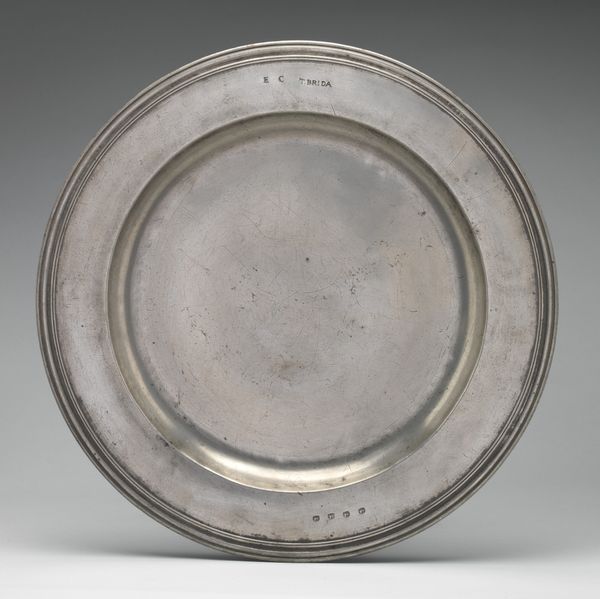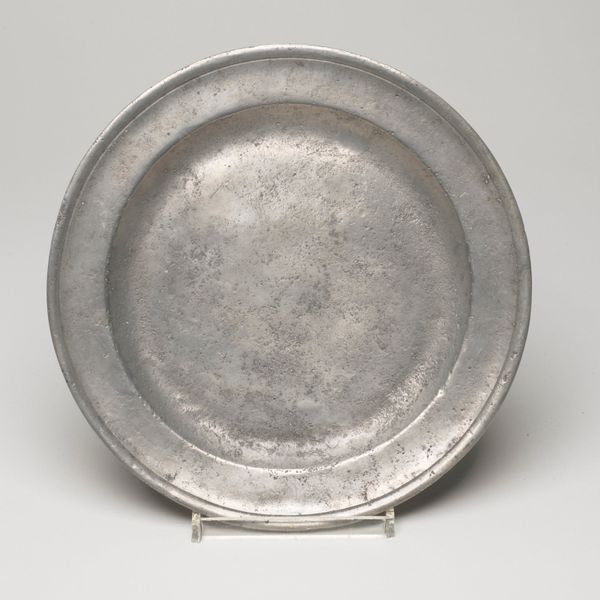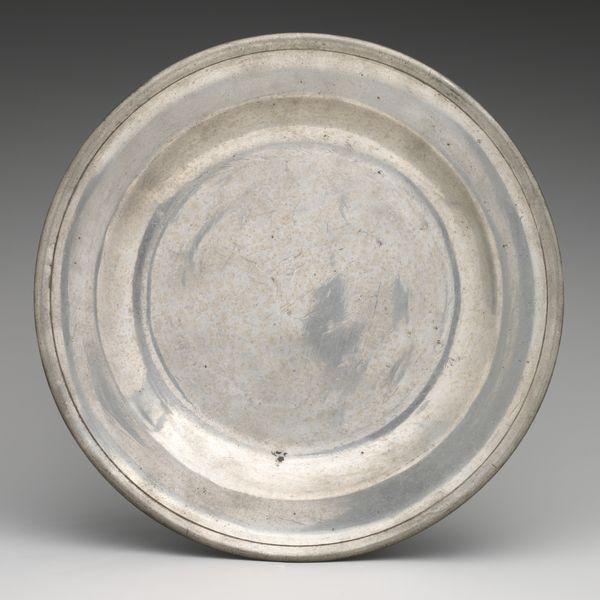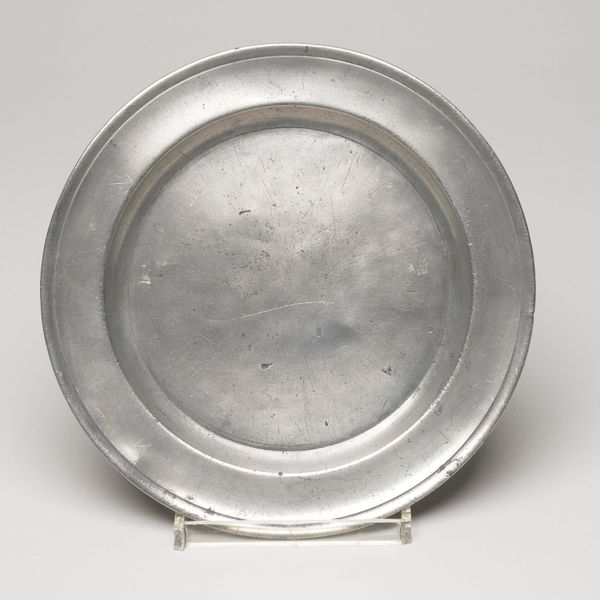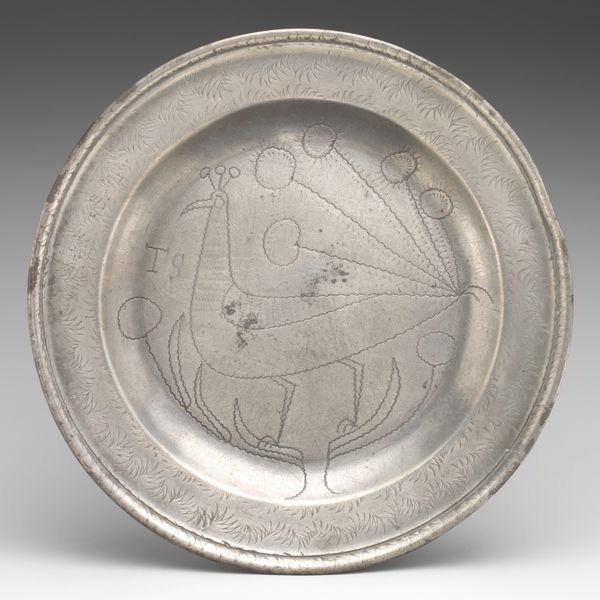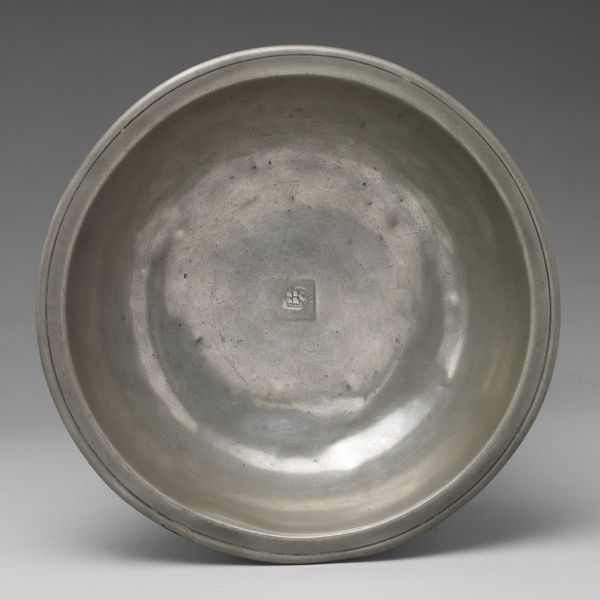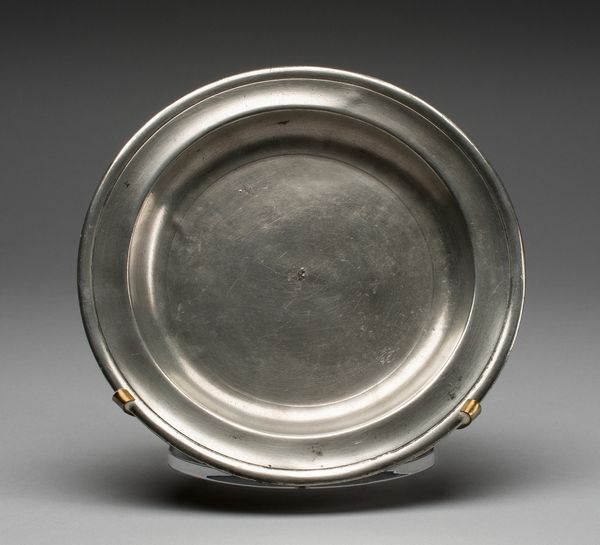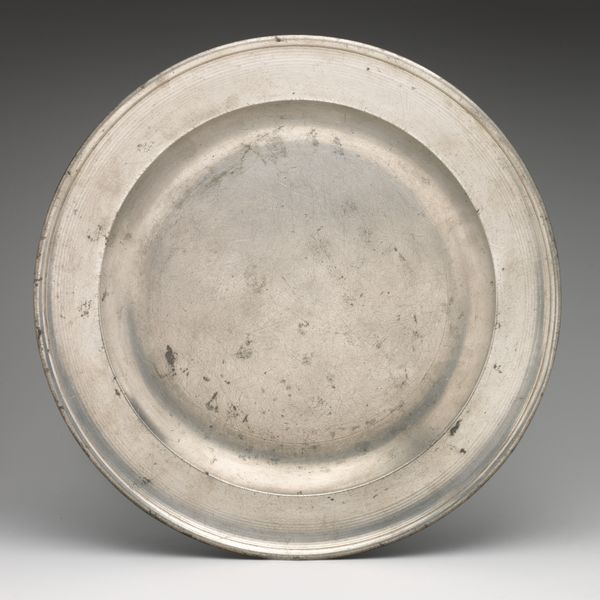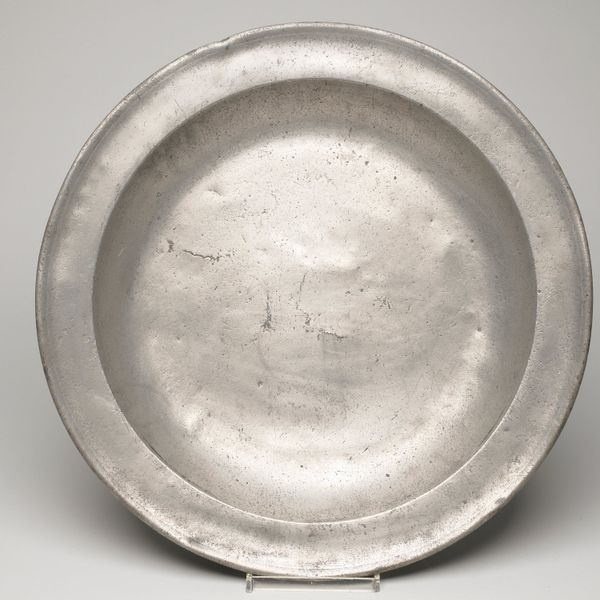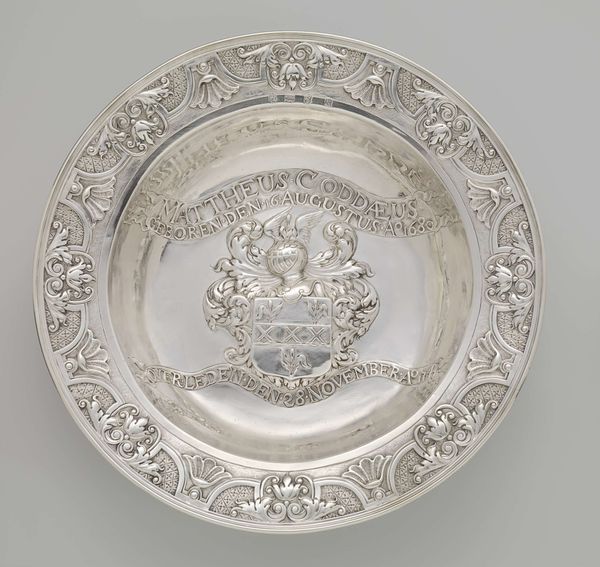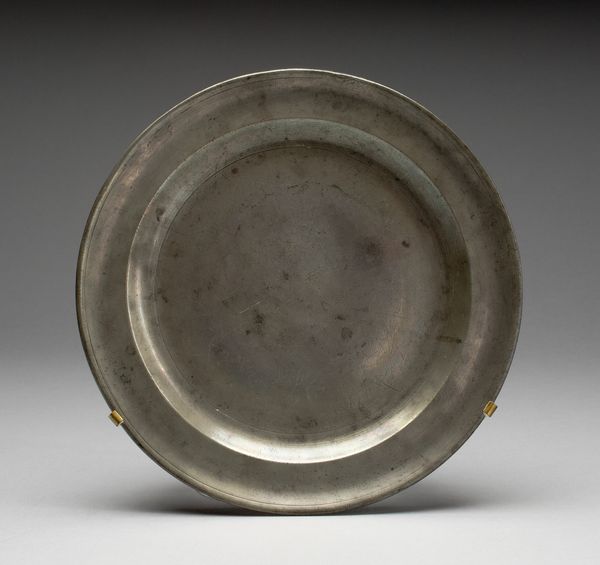
metal, ceramic
#
germany
#
metal
#
ceramic
#
geometric
#
ceramic
#
line
#
islamic-art
#
decorative-art
Dimensions: 1 3/8 x 11 3/4 x 11 3/4 in. (3.49 x 29.85 x 29.85 cm)
Copyright: Public Domain
Curator: Here we have a Seder plate, crafted around the 19th century and held within the Minneapolis Institute of Art collection. The materials appear to be a blend of metal and ceramic elements, shaped into this ritual object. Editor: It's surprisingly understated, isn't it? There’s a quiet austerity about the silvery sheen and precise linework. It suggests a ceremony of reverence and perhaps restrained joy. Curator: Precisely. Observe how the composition is essentially guided by radial symmetry. We see the star form, with tulips interspersed around the arms of the star. Look also at the geometric divisions and their elegant proportions. The line is used to describe the shapes in such clarity. Editor: And circling this inner tableau is what seems to be Hebrew lettering. Given that a Seder plate plays a pivotal role in Passover, I would presume that text to contain prayers or narratives central to the story of Exodus. Religious and domestic life truly come together in pieces like this, where devotion shapes design, and artistry reinforces community bonds. Curator: Yes, these kinds of visual forms help facilitate collective memory. The overall restraint and repetition in the pattern underscore this aspect of a continuous cultural transmission from one generation to the next, quite typical in the decorative arts. It is really more about form. Editor: Do you see any tension between it's cultural importance and its functional role as a dish? Perhaps these decorative motifs speak volumes about status or identity, or were they just customary? It is difficult to determine the artisan’s intent at such a great distance. Curator: The craftsmanship speaks volumes even if documentation is absent. This work’s excellence stands as its own record, I feel. It is the composition, structure, form itself which tells a greater story here. Editor: It’s interesting to consider the object in its original context. The interplay between function, aesthetics, and ritual gives these forms layers of meanings. Thank you. Curator: An excellent example of the melding of functionality and decorative artistry—I'm pleased we could consider its elements together.
Comments
No comments
Be the first to comment and join the conversation on the ultimate creative platform.
